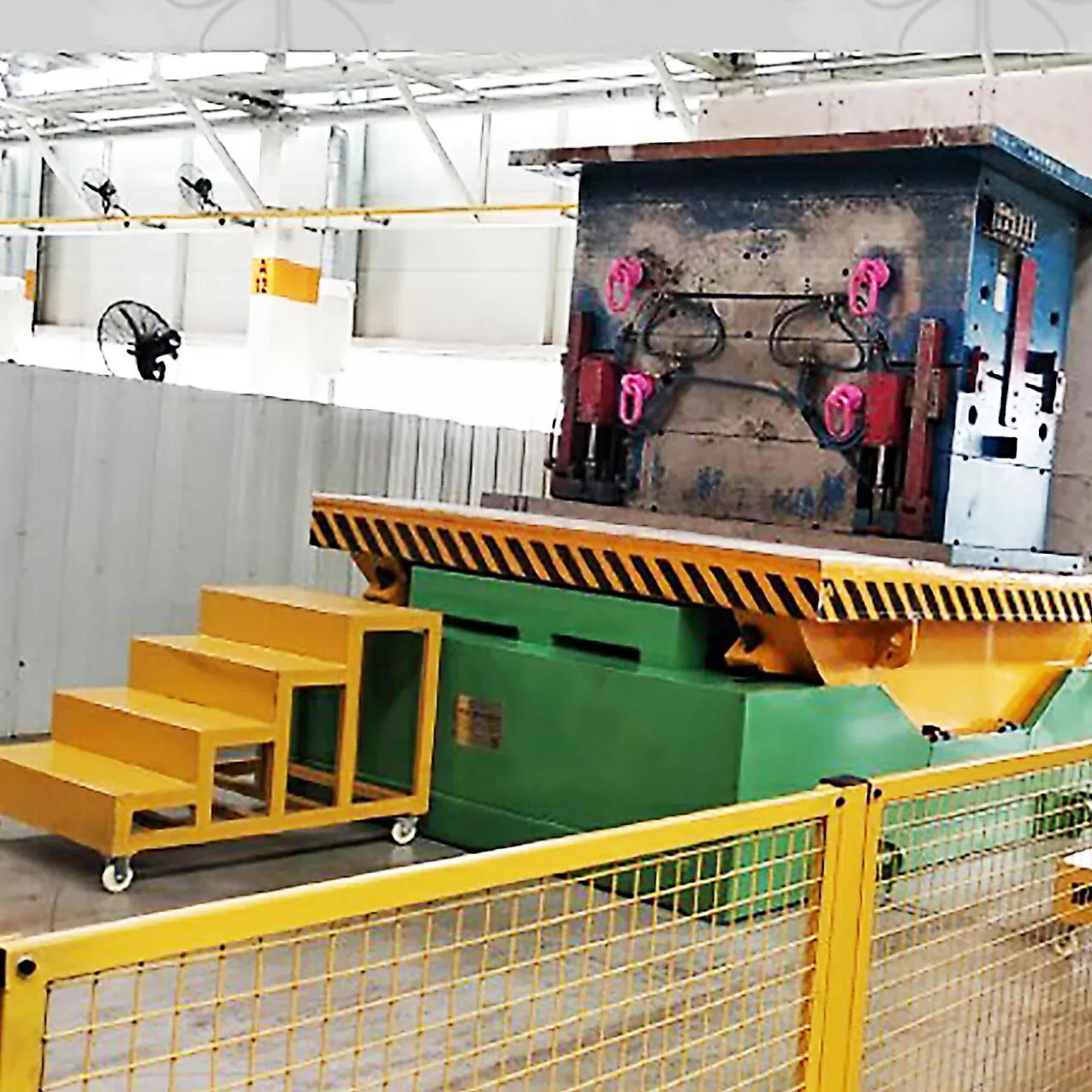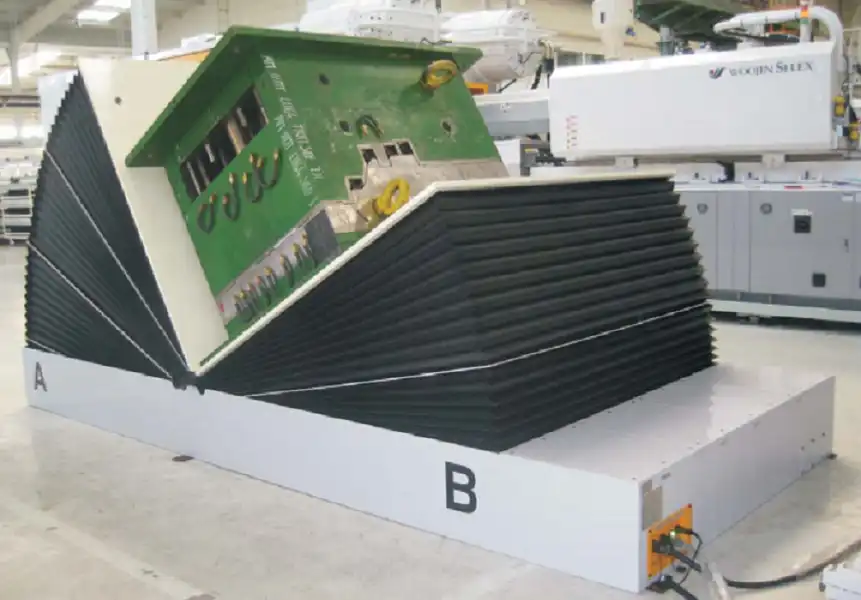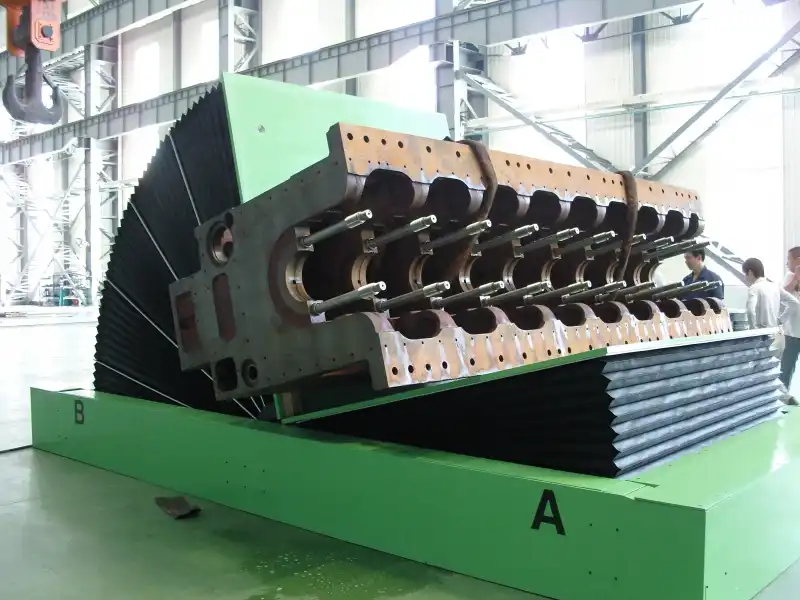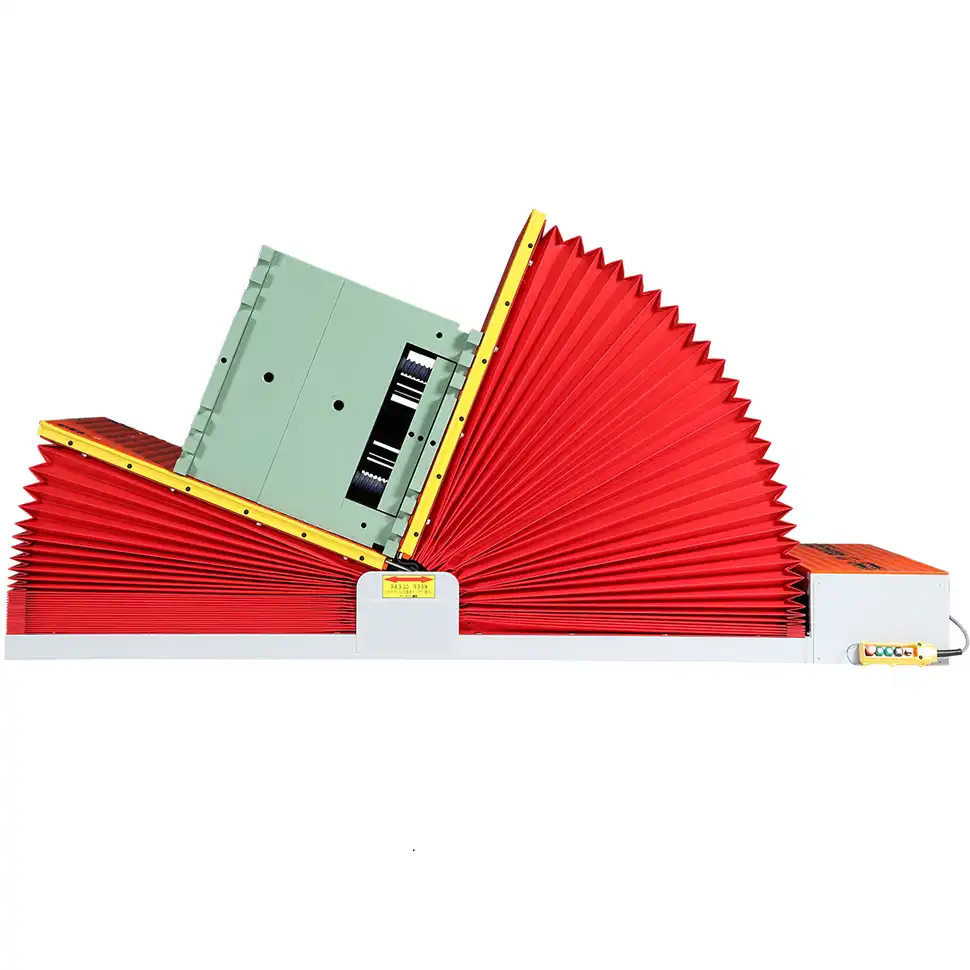Why Are More Canadian Manufacturers Using Mold Tilters for Precision and Safety?
Handling heavy, expensive molds is a major challenge in many factories. You might be using cranes and chains, a method that feels risky every single time. A slight imbalance, a moment of inattention, and a multi-ton mold can be damaged, or worse, someone can get seriously hurt. This constant risk creates stress and can lead to costly production delays and repairs. I have seen firsthand how a single incident can shut down a production line for days. There is a much safer and more reliable way to handle this critical task. Mold tilters are specifically designed to solve this problem, providing a controlled, secure method for rotating and positioning heavy molds.
More Canadian manufacturers are adopting mold tilters because they offer a direct solution to two of the biggest challenges in heavy industry: workplace safety and operational precision. These machines significantly reduce the risk of accidents associated with manual or crane-based mold handling, helping companies comply with Canada's strict occupational health and safety regulations. At the same time, their controlled, gentle motion protects expensive molds from damage, which ensures higher quality parts, reduces scrap, and extends the life of critical tooling. This leads to a safer work environment and a more profitable operation.

As an engineer who has spent his entire career in and around factories, I understand that any new piece of equipment must justify its existence. It's not just about adding another machine to the floor. It's about solving real problems and delivering a tangible return. The trend in Canada towards mold tilters is not just about following a fad; it's a calculated business decision. Let’s break down exactly how these machines deliver on their promises of safety, precision, and ultimately, profitability.
How exactly do mold tilters improve workplace safety in demanding Canadian environments?
Every plant manager in Canada knows the constant pressure of maintaining a safe workplace. The traditional methods of flipping heavy molds using overhead cranes and chains are filled with hazards. An unbalanced load can slip, chains can break, and workers are often required to be dangerously close to the suspended load to guide it. These situations are a recipe for disaster and can lead to life-altering injuries and significant financial penalties from regulatory bodies like the WSIB. I remember visiting a potential client's facility where they told me about a near-miss that could have been catastrophic. That fear is real and it slows down operations. A mold tilter is the engineered solution that removes these variables and brings predictability and security to the process.
Mold tilters fundamentally improve workplace safety by replacing unpredictable manual and crane-based operations with a stable, controlled mechanical process. The equipment firmly secures the mold onto a platform before initiating a smooth, automated rotation. This eliminates the need for workers to be in the "danger zone" and removes the risks of load slippage, sudden drops, and manual strains associated with pushing or pulling a suspended object. This directly addresses the core safety concerns and helps Canadian manufacturers build a culture of safety from the ground up.

A Deeper Look at Safety Enhancements
Safety is not just a buzzword; it's a system of risk mitigation. When I talk with factory owners, we don't just talk about the machine, we talk about the entire process and how to make it safer. A mold tilter is a cornerstone of this discussion. It addresses safety on multiple levels.
Eliminating Unpredictable Center of Gravity Shifts
When you flip a mold with a crane, the center of gravity shifts dramatically and often unpredictably. This is the moment of highest risk. The load can swing or jerk, putting immense stress on the rigging and the crane itself. A mold tilter is designed to manage this shift. The rotation happens around a fixed, engineered axis. The movement is smooth and controlled by either a powerful mechanical drive or a hydraulic system. This predictability removes the primary source of danger in mold flipping.
Reducing Ergonomic and Strain Injuries
Many facilities that use cranes still require workers to manually guide or push the mold to get it to settle correctly. This manual handling of multi-ton objects, even if it's just a push, can lead to serious musculoskeletal disorders (MSDs). These injuries, like back strains and shoulder damage, are some of the most common and costly workplace injuries in Canadian manufacturing. A mold tilter requires zero manual force from the operator. They simply secure the mold and press a button, eliminating a whole category of physical risk.
Supporting Compliance with Canadian Safety Regulations
Provinces across Canada, from British Columbia's WorkSafeBC to Ontario's Ministry of Labour, have stringent regulations about lifting and handling heavy objects. Using a purpose-built machine like a mold tilter demonstrates due diligence. It shows you have actively identified a hazard and implemented a specific engineering control to mitigate it. This is a powerful point during a safety audit and can significantly reduce liability.
| Feature Comparison | Overhead Crane & Chains | Mold Tilter |
|---|---|---|
| Risk of Dropping | High (Sling failure, imbalance) | Extremely Low (Secured platform) |
| Operator Proximity | Close to load (High risk) | At a safe distance (Low risk) |
| Manual Handling | Often required for positioning | None required |
| Ergonomic Strain | High (Pushing, pulling) | Negligible |
| Process Control | Low (Depends on operator skill) | High (Automated, consistent) |
| Compliance | Can be difficult to document | Clearly demonstrates engineering controls |
What role does a mold tilter play in achieving higher precision and reducing product defects?
A high-quality mold is a significant investment. For industries like automotive or aerospace in Canada, these molds can cost hundreds of thousands of dollars. The problem is that traditional handling methods are rough on this delicate equipment. A single accidental bump from a crane or forklift can create a small dent or scratch on the mold's surface. This tiny imperfection is then transferred to every single part produced, leading to a high rate of defects, wasted material, and customer complaints. I have seen companies struggle with quality control issues for months, only to trace the problem back to a damaged mold. This agitation over quality forces companies to seek a better way. The solution is a handling method that respects the precision of the tool itself.
A mold tilter plays a critical role in precision by ensuring the mold is handled gently and accurately every time it is moved or repositioned for maintenance. Its smooth, controlled rotation prevents the jarring impacts and shocks that are common with crane lifts. By protecting the integrity of the mold's finely machined surfaces and alignment pins, the tilter directly contributes to the production of consistently high-quality parts. This reduces defect rates, minimizes material scrap, and ultimately extends the operational life of the expensive mold, protecting the initial investment.

Breaking Down the Impact on Precision
When I design a solution for a client like SHJLPACK, my goal is to connect the equipment to their business objectives. For a manufacturer, precision is directly linked to profitability. Let's explore how a seemingly simple machine like a tilter has a profound impact on the complex world of manufacturing precision.
Protecting the Heart of Production: The Mold Surface
Think of your mold as the heart of your production process. Any damage to it has downstream consequences. The surfaces of injection molds, stamping dies, or casting molds are often machined to tolerances measured in microns. A tilter's platform and securing mechanism are designed to hold the mold without damaging these critical surfaces. The rotation is powered by systems, often hydraulic, that provide a fluid, shock-free motion. This is a stark contrast to a chain that can scrape, or a sudden stop from a crane that can jolt the entire assembly. Protecting the mold surface is the first step to ensuring every part meets specification.
Enabling Precise Maintenance and Repair
Molds require regular cleaning, inspection, and maintenance. A tilter allows maintenance staff to safely and easily orient the mold to the optimal position for this work, such as a full 90-degree or 180-degree rotation. This easy access means technicians can do a better, more thorough job. They can clearly see and reach all parts of the mold. Better maintenance leads to a longer mold life and better performance. When a mold is hanging from a crane, it might be unstable, making detailed work difficult and dangerous. A stable platform encourages precision work.
The Chain of Quality: From Handling to Final Product
There is a direct and unbreakable link between how you handle your tools and the quality of your product.
- Gentle Handling: A mold tilter prevents damage.
- Mold Integrity: An undamaged mold retains its precise dimensions.
- Consistent Parts: A precise mold produces parts that are consistently within tolerance.
- Low Scrap Rate: Consistent parts mean fewer rejects.
- High Profitability: Lower scrap rates and fewer customer returns directly boost the bottom line.
This chain reaction starts with that very first step: how you move the mold from the storage rack to the press.
| Handling Method | Risk of Surface Damage | Risk of Misalignment | Impact on Part Quality |
|---|---|---|---|
| Crane & Chains | High | Moderate | Potential for inconsistencies |
| Forklift | Very High | High | High risk of defects |
| Mold Tilter | Very Low | Very Low | Promotes consistent quality |
What is the real return on investment (ROI) for a Canadian business investing in a mold tilter?
As a business owner myself, I know that every investment must be justified on paper. It is easy to look at the price tag of a new machine and see it only as a cost. Many Canadian manufacturers, especially small to medium-sized enterprises, are wary of large capital expenditures. They might think, "Our crane works fine, why spend the money?" This thinking ignores the hidden costs of the status quo: the cost of one major accident, the accumulated cost of minor mold repairs, the lost production time from inefficient changeovers, and the ongoing cost of scrapped parts due to mold damage. The real agitation comes when you add up these hidden costs over a year. The solution is to reframe the purchase not as a cost, but as an investment with a clear and measurable return.
The true return on investment (ROI) for a mold tilter is a combination of direct cost savings and significant productivity gains. Financially, the ROI is calculated from reduced labor costs for mold handling, lower insurance premiums due to a safer workplace, and the elimination of expenses related to accidents and mold damage. Operationally, the return comes from increased machine uptime due to faster, more efficient mold changes and higher profitability from reduced scrap rates. For many Canadian businesses, the payback period for a mold tilter is surprisingly short, often just 12 to 24 months.

Calculating Your Return on Investment
Let's move beyond general statements and look at the specific factors that contribute to the ROI. When I work with clients, I encourage them to put numbers to these categories. It makes the decision-making process clear and logical. This is exactly the kind of analysis a practical leader like Javier Morales would appreciate.
Direct, Hard-Cost Savings
These are the easiest numbers to quantify.
- Labor Reduction: Flipping a mold with a crane often requires two or three people: a crane operator and one or two riggers/spotters. A mold tilter can be operated by a single person. You can calculate the hourly wage savings for every mold change.
- Accident and Injury Prevention: A single lost-time injury in Canada can cost a company tens of thousands of dollars in direct costs (WSIB premiums, medical) and indirect costs (lost productivity, training a replacement). Preventing just one major incident can pay for the machine several times over.
- Reduced Mold Repair Costs: Ask your maintenance department how much they spend per year on repairing molds damaged during handling. This can range from a few thousand to tens of thousands of dollars. A tilter can reduce this cost to nearly zero.
Indirect, Soft-Cost Gains
These are just as real, but sometimes harder to measure.
- Increased Production Uptime: A mold change with a tilter is faster and more predictable than with a crane. If you can save 30 minutes per mold change and you change molds twice a day, you gain an hour of valuable production time daily. Over a year, that adds up to a significant increase in capacity and revenue.
- Improved Product Quality: Reducing the scrap rate by even 1% can lead to huge savings in material, labor, and energy costs. A tilter contributes to this by protecting mold integrity.
- Extended Mold Lifespan: A multi-ton mold is a major capital asset. If gentle handling extends its life from 7 years to 10 years, you have deferred a major capital expense, which has a significant positive impact on cash flow.
| ROI Contribution Factor | Estimated Annual Savings (Example) | Notes |
|---|---|---|
| Labor Savings | $15,000 | (1 worker saved x 5 hours/week x $60/hr burdened rate x 50 weeks) |
| Accident Prevention | $20,000 | (Based on industry average cost, prorated by risk reduction) |
| Mold Repair Reduction | $10,000 | (Based on reducing annual repair budget by 80%) |
| Uptime Gain | $25,000 | (Value of 200 extra production hours per year) |
| Scrap Reduction | $12,000 | (Value of raw material and energy saved) |
| Total Annual Return | $82,000 | This is a compelling number. |
With a machine cost of, for example, $100,000, the simple payback period in this scenario is just over 14 months. This is the kind of business case that makes sense in any industry.
What common mistakes do I see when factories select and implement a mold tilter?
Over my years in this industry, I've seen many companies make the right decision to invest in new technology. But sometimes, the execution is flawed. The problem is that buying a machine is not the same as implementing a solution. A manager might see a catalog, pick a model based on one or two specs, and place an order. But they fail to consider the unique details of their own operation. This can lead to frustration. The machine might be too small, too slow, or placed in a location that creates a new bottleneck in the workflow. I've personally helped clients who bought a machine from another supplier that wasn't working out. The agitation is immense when you've spent a lot of money on something that doesn't solve your problem. The solution is to approach the selection process with a deeper, more holistic understanding of your needs.
From my experience, the most common mistake is focusing solely on the maximum weight capacity while ignoring the mold's dimensions and center of gravity. A close second is failing to integrate the mold tilter into the overall factory workflow, placing it in an inefficient location. Another frequent error is choosing the wrong type of tilter (e.g., mechanical when hydraulic is needed for delicate molds) without understanding the operational differences. These mistakes can turn a potentially valuable investment into an underperforming piece of equipment.

My Insights on Avoiding Pitfalls
As the founder of SHJLPACK, my mission is not just to sell machines, but to share the knowledge I've gained to help others succeed. My success came from understanding the details, and I want to pass that on. Here are the key mistakes I've seen and how you can avoid them.
Mistake 1: The "Weight-Only" Trap
I remember a client in the automotive parts sector in Ontario. They bought a 20-ton tilter because their heaviest mold was 18 tons. The problem was that this specific mold was very tall and narrow. When they tried to tilt it, the center of gravity shifted so far outside the machine's designed balance point that it became unstable. The machine was rated for the weight, but not for the shape. The key takeaway is this: you must provide your supplier with the weight AND the full dimensions (length, width, height) of your largest and most awkwardly shaped molds. A good supplier will analyze the center of gravity and ensure the machine and its foundation are perfectly suited for your specific application.
Mistake 2: Ignoring the Workflow
A mold tilter is not an island. It's a stop along a journey. How does the mold get from the storage rack to the tilter? How does it get from the tilter to the press? I once visited a factory where they placed a beautiful new tilter in a corner to save space. But the overhead crane couldn't easily reach it. Every mold change required a complex, time-consuming forklift maneuver to get the mold to the tilter. The tilter itself was fast, but the overall process was slower than before! Before you install, map out the entire process flow. The tilter should be located in a logical position that minimizes travel time and handling steps for both cranes and forklifts.
Mistake 3: The Wrong Tool for the Job (Mechanical vs. Hydraulic)
There are different types of tilters for a reason. Mechanical tilters (using a screw jack system) are often robust, require less maintenance, and can be more cost-effective. They are great for many applications. However, hydraulic tilters offer an incredibly smooth, cushioned motion. If you are handling extremely delicate, high-precision molds with sensitive components, the smoother control of a hydraulic system might be essential to prevent any risk of shock or vibration. Don't just look at the price. Discuss your specific molds and quality requirements with your supplier. A good partner will help you choose the technology that best fits your needs, not just the one they want to sell.
| Decision Factor | Questions to Ask Yourself | Why It Matters |
|---|---|---|
| Capacity & Dimension | What is my heaviest mold? What are the L x W x H dimensions of my largest/tallest mold? | Ensures stability and safety by accounting for the center of gravity. |
| Workflow Integration | Where will the machine live? How will molds get to and from it? | Prevents creating new bottlenecks and maximizes the efficiency gains. |
| Power Source | Do I need the ultimate smooth control (Hydraulic) or is robust simplicity enough (Mechanical)? | Matches the machine's performance characteristics to the delicacy of your molds. |
| Control & Features | Do I need a fixed 90-degree tilt, or variable angles? Do I need remote control? | Ensures the machine has the flexibility you need for maintenance and operation. |
Conclusion
Investing in a mold tilter is a strategic decision for safety and precision. It reduces risk, protects valuable assets, and improves your overall operational efficiency and profitability in the long run.





